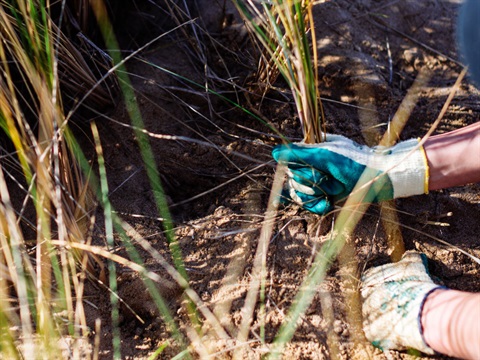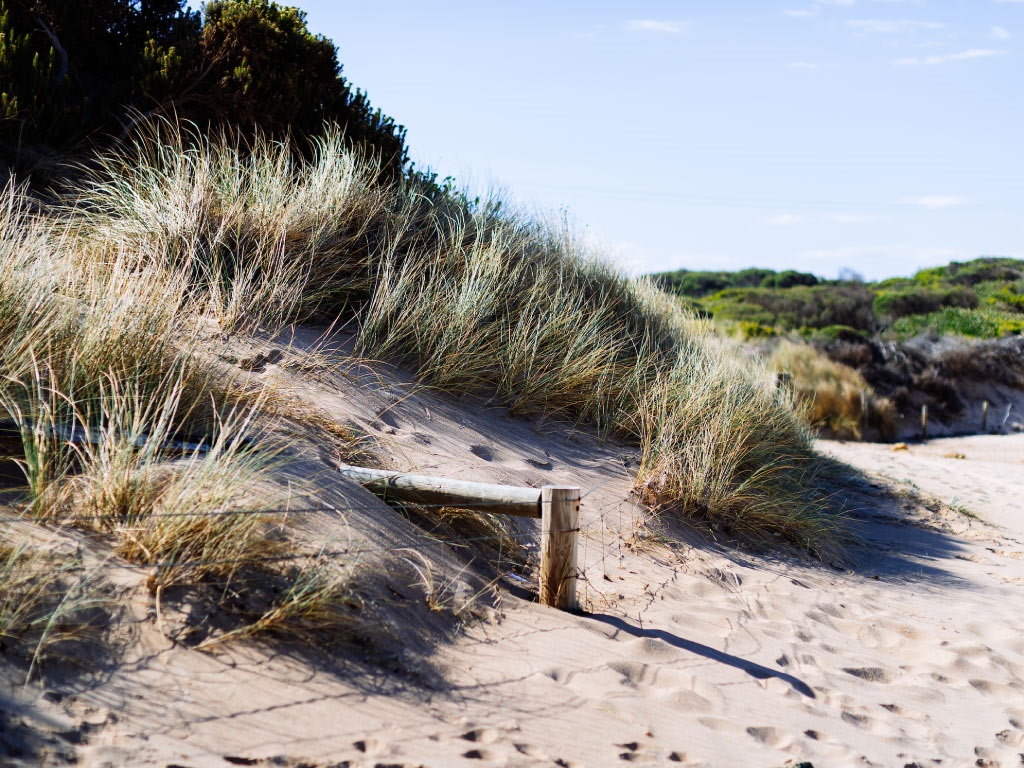Sandy beaches and dune systems

12 April 2023
by Inala Swart, Conservation Ranger Apollo Bay
All along the Great Ocean Road we are blessed with plenty of beautiful sandy beaches and dunes. While many of us may appreciate beaches just for their scenic and recreational value, these sandy beaches and dune systems also act as critical buffers protecting the shore from the effects of the sea.
Erosion of dune areas is a serious issue to coastal communities, particularly in the face of a changing climate. In the past the threat of erosion in coastal communities has been treated by planting introduced species like marram grass (Ammophila arenaria) in an attempt to stabilise the dunes.
However, as our understanding of coastal morphology has improved, we now know that this has a negative impact the formation of dunes and their ability to dissipate the energy of the ocean. Marram grass binds sand together too tightly, which prevents natural sand movement in the wash zones of dunes. This leads to ‘cliffing’, where steep embankments form can form on the edges of dunes. These steep edges self-perpetuate more undercutting and dune loss, as well as being unstable and potentially dangerous.
The authority is working to prevent this erosion by removing marram grass and planting out native vegetation to restore the original function of dunes. Indigenous vegetation like pigface (Carpobrotus rosii) and spinifex (Spinifex sericeus) is less dense and allows some degree of wave and sand movement whilst still retaining sand, meaning the energy of waves is more effectively buffered out in the lower dunes slopes before it gets a chance to cut too far into the dune.
By working for a conservation viewpoint, we not only help to restore native species and habitats, but also help to harness the power healthy dune systems to protect ourselves and the coast from ongoing erosion.

Images: World Surf League / Jarrah Lynch